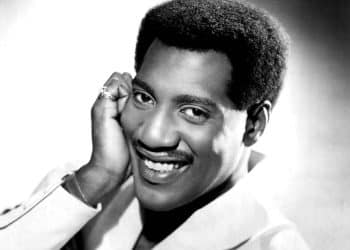Actor, recording artist and author Tyrese Gibson stopped by Queen Latifah's daytime talk show for some interesting conversation last week.
In a clip from his time on the show, the "Sweet Lady" singer decodes what men might really be saying without verbally saying it to women.
Tyrese Gibson's book, "Manology," is available now.
Have you ever found yourself puzzled by the way men communicate? Do you struggle to decode their hidden meanings and understand what they really mean when they speak?
Well, fear not, because in this article, we are going to delve into the world of man-talk with none other than Tyrese Gibson on ‘Queen Latifah’.
In this insightful interview, Tyrese Gibson, the renowned actor and musician, takes us on a journey through the subtle nuances of male communication. He decodes the intricacies of man-talk and helps us navigate through mixed signals and indirect messages that often leave us perplexed.
Get ready to gain a deeper understanding of how men express themselves and uncover the hidden meanings behind their words. So sit back, relax, and let Tyrese Gibson be your guide as he breaks down the art of man-talk on ‘Queen Latifah’.
Understanding the Nuances of Communication
You gotta understand the subtle art of communication, my friend. It’s not just about what someone says, but also how they say it and what they’re really trying to convey.
Take Tyrese Gibson’s recent appearance on ‘Queen Latifah’ for example. He broke down the concept of man-talk and shed light on the nuances that often go unnoticed.
In his interview, Tyrese emphasized the importance of paying attention to non-verbal cues when deciphering man-talk. He explained that men often mask their true feelings behind a tough exterior, using certain phrases or gestures as a way to express themselves indirectly. By being attentive to these subtleties, you can gain a deeper understanding of what’s really going on beneath the surface.
Furthermore, Tyrese highlighted that man-talk is heavily influenced by societal expectations and stereotypes. Men are often conditioned to be stoic and hide their vulnerabilities, which can make it challenging for them to express themselves openly. Understanding this cultural context is crucial in decoding man-talk since it allows you to see beyond the words spoken and recognize the underlying emotions that may be concealed.
So next time you find yourself in a conversation with a man, remember to read between the lines and pay attention to those hidden messages. Listen not only with your ears but also with your intuition. By grasping the intricacies of communication, you’ll be able to connect more deeply with others and foster meaningful relationships based on genuine understanding.
Navigating Mixed Signals and Indirect Communication
Navigating the murky waters of mixed signals and indirect communication can be quite a challenge. It’s like trying to decipher a secret code or unraveling a complex puzzle.
One moment, you think you’re on the same page with someone, only to receive conflicting signals that leave you feeling confused and frustrated. It’s important to remember that people often communicate in subtle ways, using nonverbal cues or hints instead of directly expressing their thoughts and feelings.
When faced with mixed signals, it’s crucial to pay attention to both verbal and nonverbal cues. Sometimes, what someone says may not align with their body language or tone of voice. They might say one thing but mean something completely different.
This is where your intuition comes into play – trust your gut instincts when interpreting these mixed messages. Additionally, don’t be afraid to ask for clarification if something doesn’t make sense or feels contradictory. Open communication is key in navigating these tricky situations.
Indirect communication can also pose challenges as it requires reading between the lines and understanding the underlying meaning behind someone’s words. People often use subtle hints or suggestions instead of stating their desires or concerns directly. This can lead to misunderstandings if you’re not attuned to these nuances.
Pay attention to context, tone, and nonverbal cues when trying to decode indirect communication. Listen carefully and try to understand the underlying message being conveyed rather than solely focusing on the literal words spoken.
Navigating mixed signals and indirect communication is no easy feat. It requires patience, observation skills, and effective listening abilities. Remember that people communicate in various ways, sometimes using nonverbal cues or hinting at their true intentions indirectly.
By paying close attention to both verbal and nonverbal cues while trusting your intuition, you’ll be better equipped to decipher these complex forms of communication effectively, ultimately enhancing your overall communication skills and fostering stronger connections with others.
Conclusion
So there you have it, folks. Tyrese Gibson has given us a glimpse into the world of ‘man-talk’ on Queen Latifah’s talk show. Through his insightful explanations and anecdotes, he’s shed light on the nuances of communication between men, helping us understand their often indirect and mixed signals.
By decoding these man-talk secrets, we can bridge the gap between genders and foster better understanding in our relationships. Gibson’s perspective is invaluable in breaking down stereotypes and misconceptions surrounding male communication. His openness and honesty invite us to reflect on our own communication styles and recognize the importance of empathy and active listening in any conversation.
Through his words, we’re reminded that effective communication goes beyond words – it involves paying attention to body language, tone of voice, and unspoken emotions.
In conclusion, Tyrese Gibson’s appearance on Queen Latifah’s show has provided valuable insights into the mysterious world of ‘man-talk.’ By encouraging open dialogue about gender differences in communication, we can build stronger connections with others and foster healthier relationships. So let’s take these lessons to heart and strive for clearer understanding in all our conversations – because every interaction is an opportunity for growth and connection.






